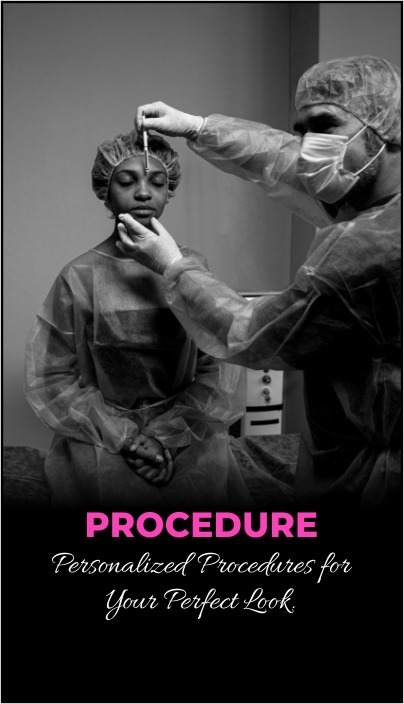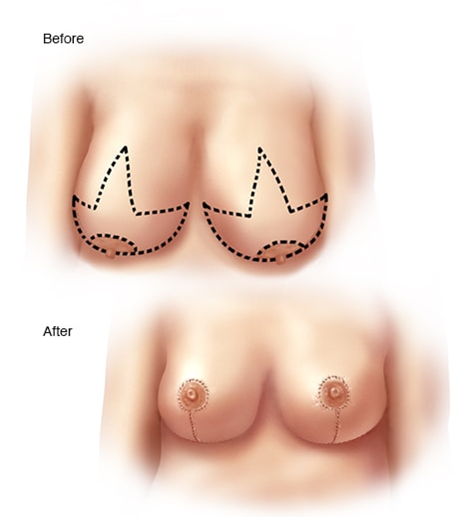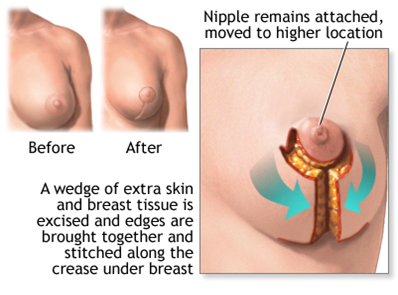

Breast reduction surgery entails the removal of skin and tissue from the breast, followed by reshaping and elevating to create a smaller, more proportionate bust size.
Many women struggle with the decision to have a breast reduction, but afterwards consider it one of the best decisions they ever made for themselves.
Breast reduction surgery, also known as reduction mammaplasty, removes fat, breast tissue, and skin from the breasts. For those with large breasts, breast reduction surgery can ease discomfort and improve appearance.
Breast reduction surgery might also help improve self-image and the ability to take part in physical activities. If you're thinking of breast reduction surgery, talk to a board-certified plastic surgeon. It's important to understand what's involved with breast reduction surgery, including possible risks and complications. It's also important to know what the surgery can and can't do.
Breast reduction surgery is meant for people who have large breasts that cause the following:
Breast reduction surgery generally isn't recommended for people who:
You can have breast reduction surgery at any age — sometimes even as a teenager. But breasts that aren't yet fully grown might need a second surgery later in life.
Reasons to postpone breast reduction surgery include:
Breast reduction surgery has the same risks as other major surgeries — bleeding, infection, and a bad reaction to the anesthesia. Other possible risks include:
Your plastic surgeon will likely:
Planning breast reduction surgery might require:
Usually, you can go home the day of the surgery. Arrange for someone to drive you home from the hospital.
Immediately after surgery:
For the first days or week after surgery:
After that:
Scarring fades over time. You will need a follow-up visit with your surgeon to check your recovery.
Breast reduction surgery is usually done under general anesthesia, either in a hospital or outpatient surgical center.

The method used to reduce the size of your breasts can vary. The process might include:
The surgeon usually:
The nipple and the area around it usually stay attached to the breast. For very large breasts, the surgeon might need to remove them and add on a new nipple.
Your surgeon will try to make your breasts look alike, but breast size and shape might vary somewhat. The size of the areola also might be smaller. The incision scars will fade over time, but they won't completely go away.
Breast reduction may be recommended if you have very large breasts (macromastia) and:
Some women may benefit from non-surgical treatments, such as:
Risks of anesthesia and surgery in general are:
Risks specific to this procedure include:
You may go home the same day or stay overnight in the hospital.
A gauze dressing (bandage) will be wrapped around your breasts and chest. Or, you will wear a surgical bra. Wear the surgical bra or a soft supportive bra for as long as your surgeon tells you to. This will likely be for several weeks.
Drainage tubes may be attached to your breasts. These tubes will be removed within a few days.
Your pain should decrease in a few weeks. Ask your surgeon if you can take acetaminophen (Tylenol) or ibuprofen (Advil) to help with pain instead of a narcotic medicine. If you do use a narcotic medicine, be sure to take it with food and plenty of water. Do not apply ice or heat to your breasts unless your surgeon has told you that is OK.
Ask your surgeon when it is OK to shower or bathe.
Within a few weeks, the swelling and bruising around your incisions should disappear. You may have a temporary loss of sensation in your breast skin and nipples after surgery. Sensation may return over time.
Follow any other self-care instructions you are given.
Schedule a follow-up visit with your surgeon. At that time you will be checked for how you are healing. Sutures (stitches) will be removed if needed.
Successful breast reduction surgery can relieve pain in the upper back, neck, and shoulders. It might also increase the ability to take part in physical activities and promote a better self-image.
Results will show right away, but it can take months for the swelling to completely go down and the surgical scars to fade. The final result generally lasts a long time. But aging, changes in weight, pregnancy, and other factors can change breast shape and size.

Reduction mammoplasty; Macromastia – reduction
Breast reduction surgery is done under general anesthesia. This is medicine that keeps you asleep and pain-free.
For a breast reduction, the surgeon removes some of the breast tissue and skin. Your nipples may be moved higher to reposition them for cosmetic reasons.
In the most common procedure:
The procedure can last 2 to 5 hours.
Ask your surgeon if you need a screening mammogram based on your age and risk of having breast cancer. This should be done long enough before surgery so if more imaging or a biopsy is needed, your planned surgery date won't be delayed.
Tell your surgeon or nurse:
The week or two before surgery:
On the day of surgery:
You are likely to have a very good outcome from breast reduction surgery. You may feel better about your appearance and be more comfortable with various activities.
Pain or skin symptoms, such as striation, may disappear. You may need to wear a special supportive bra for a few months for comfort and to help with healing.
Scars are permanent. They will be more visible for the first year, but will then fade. The surgeon will make every effort to place the surgical cuts so that scars are hidden. Cuts are usually made on the underside of the breast and around the areola. Most of the time, the scars should not be noticeable, even in low-cut clothing.
